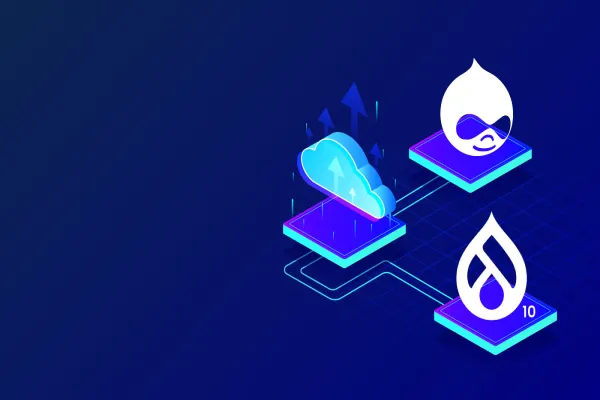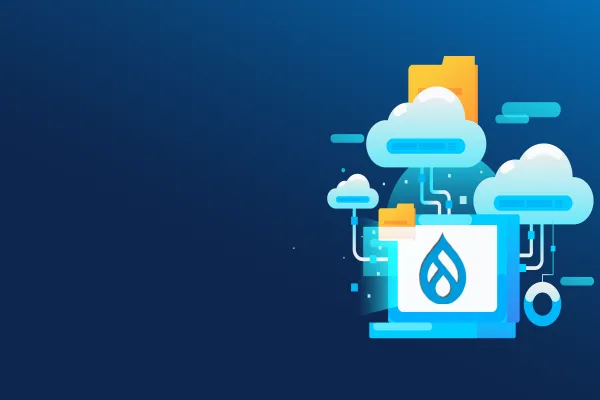As per Drupal's usage statistics as of July 2023, an estimated 49.6% of all Drupal websites are still on version 7. That means that thousands of businesses worldwide must undertake the vital process of data migration as they upgrade to more advanced versions of Drupal - versions 9 or 10.
The transition from one website version to another isn't merely a technical upgrade. It signifies the transfer of a wealth of invaluable information - our 'legacy data' - that holds significant historical and operational value. With Drupal 7 reaching its end-of-life, the leap to Drupal 9/10 becomes an impending necessity, making the task of managing this data migration a pivotal concern. In this article, we delve into the labyrinth of data migration, shedding light on strategies that ensure a smooth and efficient transition.
Deciphering the Data Landscape: The Inception
The key to successful data migration lies in a comprehensive understanding of your data landscape. To decode the intricacies of your data, one must take a deep dive into the existing Drupal 7 site, dissecting each layer meticulously. An effective approach is a collective exercise involving both technical and business stakeholders, ensuring a thorough review that leaves no stone unturned.
Technical teams are the spearhead of this exercise, responsible for mapping out a comprehensive entity relationship diagram that serves as a bird's eye view of the data structure. Key elements to scrutinize include content types and their corresponding fields, taxonomy terms, user data, blocks, views, and any custom tables.
Armed with a detailed outline of the data structure, we then use SQL queries or custom scripts to estimate the volume of data in each segment. Tools like Drush, a command-line shell and Unix scripting interface for Drupal, can prove instrumental in this process.
Data Classification and Prioritization: The Bedrock of Migration
With an in-depth understanding of the data landscape, we progress to the classification and prioritization of data. This step is crucial as it helps determine the sequence of migration and handle dependencies.
The process of data classification and prioritization encompasses several aspects. These include understanding the impact on daily business operations, compliance with legal and regulatory requirements, the overall value of the data, and the dependencies that certain data items might have. This methodical classification forms the blueprint for your migration strategy, ensuring that business-critical and high-priority data is handled with due diligence.
Harnessing the Power of Drupal’s Core Migration Modules
The migration journey from Drupal 7 to 9/10 is facilitated by Drupal's core migration modules, namely Migrate, Migrate Drupal, and Migrate Drupal UI. These modules provide a robust framework for conducting migrations. The Migrate API takes it a step further, offering you the flexibility of crafting custom migration paths and providing granular control over the transfer and transformation of your legacy data.
Leveraging the Ecosystem of Contributed Modules
Beyond Drupal's core modules, there lies an ecosystem of contributed modules that can significantly ease your data migration. Modules like Migrate Plus add extra functionalities such as bundling migrations, while Migrate Source CSV can be instrumental if your migration includes data from CSV files. As you delve into the world of contributed modules, ensure to check their compatibility with Drupal 9/10.
Navigating the World of Media Files
Media files, due to their size and format, often pose unique challenges in migration. The process begins with creating an exhaustive inventory of media files in your Drupal 7 site, which includes noting down the type of files, their sizes, and their association with site content.
A critical aspect of dealing with media files is storage planning. Drupal 9/10 comes with a built-in Media module that can handle a diverse range of media types and offers an organized media library. You might also want to consider leveraging a Content Delivery Network (CDN) for swift delivery of your media files.
Drupal's core Migrate API, used in conjunction with other modules, helps in transferring your media files. For instance, the Migrate File to Media module is particularly useful for creating 'media' entities from your files in the new site. For embedded media within text fields, consider using the Migrate Plus module. And as always, rigorous testing of your media migration is crucial to verify that all files have been correctly transferred and are displayed properly on your pages.
Handling Custom Data: A Unique Challenge
Custom data, often falling outside of Drupal’s built-in content types and fields, can be a challenging aspect to handle. The intricacies of dealing with custom data might necessitate the creation of custom source, process, and destination plugins, along with custom migration templates. Dealing with custom data requires a thorough understanding of Drupal's Migrate API and perhaps some advanced PHP programming. For high-value data or complex migrations, consider employing expert help or dedicated Drupal migration services.
Testing: The Bedrock of a Successful Migration
In the domain of data migration, unexpected surprises can be unwelcome hurdles. Hence, it's essential to thoroughly test your migration in a secure, non-production environment before initiating the actual migration. This allows you to catch any bugs or inconsistencies in time and fine-tune your migration process as needed.
The Continuous Migration Strategy
In certain scenarios, particularly with high-traffic sites, data continues to be added to the Drupal 7 site during the development and testing phases of the migration process. In such cases, a continuous migration strategy can be beneficial. This involves migrating data in waves while both sites are live, ensuring that the Drupal 9/10 site stays updated with new data until the final switch.
Remember, data migration, although complex, can be significantly streamlined with a profound understanding of your data, efficient utilization of Drupal's migration tools, and rigorous testing of your migration plan. These considerations, when taken into account, pave the way for a seamless and efficient transition from Drupal 7 to Drupal 9/10.
Looking to embark on this journey? Our seasoned team at Valuebound has a wealth of experience and expertise in guiding you through this process. Let's join hands to build a better digital future. Reach out to us today to discuss your migration project!





